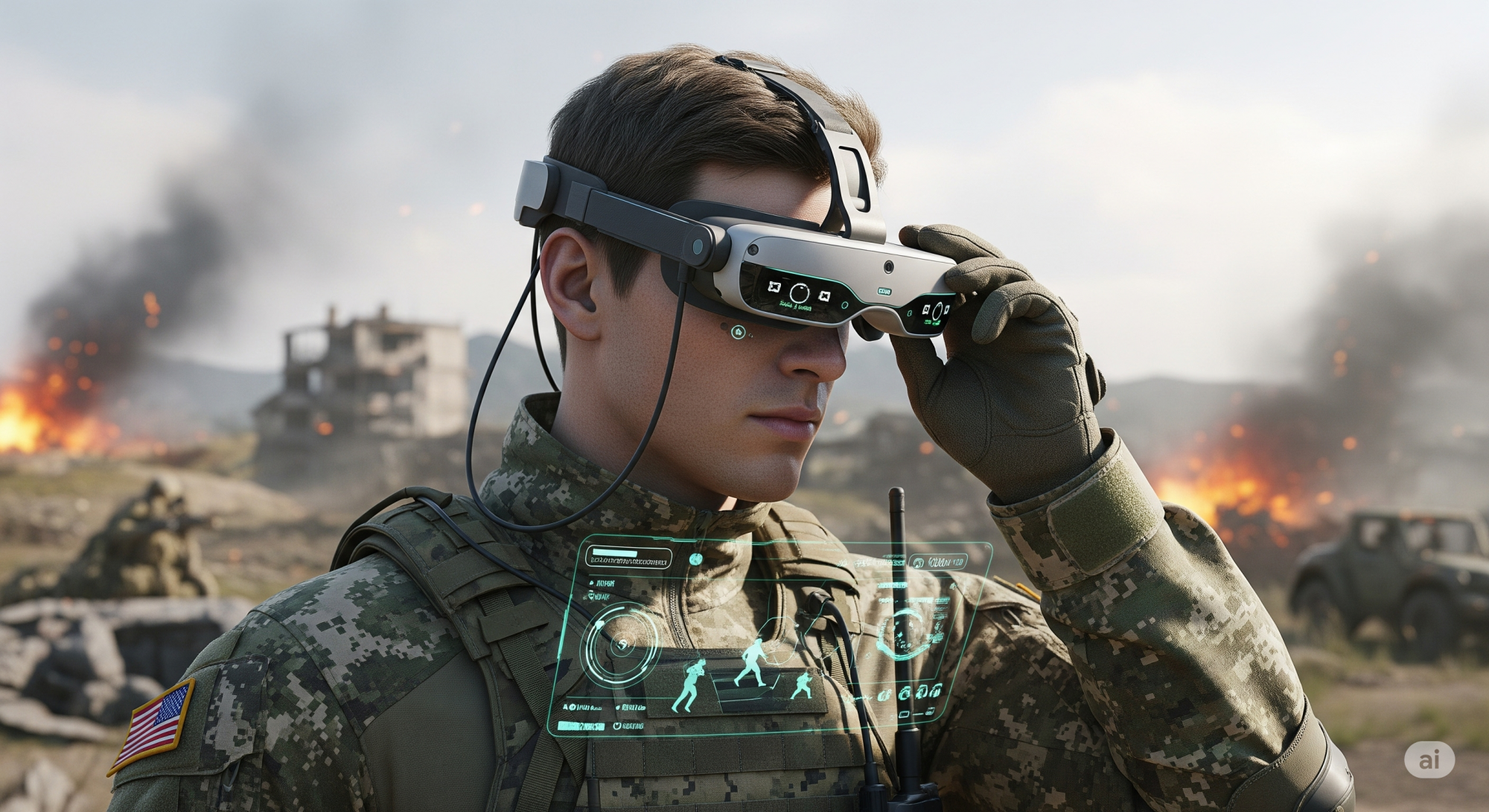In recent years, the military has started to make significant use of virtual reality (VR) and extended reality (XR) technologies, tapping into these advanced tools to improve awareness and effectiveness in the battlefield. As conflicts grow more intricate, the call for innovative solutions intensifies. Consequently, VR and XR emerge as vital assets for training, simulations, and support during real operations.
This blog post delves into various military applications of VR and XR, focusing on their specific roles in training, awareness of surroundings, and equipment maintenance. We will examine the hardware and software driving these advancements and illustrate how they are reforming the realm of modern warfare.
Training Simulations: The New Frontier
One of the most notable applications of VR in the military is training. Traditional training environments can be costly and consume a lot of time, but VR provides immersive experiences that imitate real-world situations. For example, systems like the Synthetic Theater of War (STOW) enable military personnel to participate in lifelike simulations without stepping outside their base.
Moreover, VR training solutions extend beyond individual soldiers; they encompass entire units coordinating complex missions. As a report by the U.S. Army suggests, VR training can significantly lower training hours while boosting skill retention and preparedness.
Enhanced Battlefield Awareness with XR
Extended reality (XR), which includes both augmented reality (AR) and virtual reality, delivers unmatched improvements in battlefield awareness. AR can project essential information onto a soldier’s view of the battlefield. For instance, the Integrated Visual Augmentation System (IVAS) enables soldiers to receive crucial data, such as enemy positions and terrain features, right through their goggles.
This setup not only sharpens situational awareness but also strengthens decision-making skills. As highlighted by the U.S. Army’s modernization strategy, improved visibility provides tactical benefits, making XR essential in contemporary combat.
Maintenance and Repair Using Immersive Technologies
Aside from training and battlefield applications, VR and XR technologies are advancing the maintenance and repair processes. The military employs AR tools to enhance maintenance on complicated machinery. For example, AR headsets allow technicians to overlay guidance and diagrams onto the equipment they are fixing.
By offering real-time data and step-by-step repair instructions, these technologies cut down downtime and boost efficiency, which is critical in high-pressure military operations where every second is vital.
Field Intelligence and Strategic Planning
VR and XR also play a crucial role in field intelligence and strategic planning. Commanders are utilizing immersive technologies to analyze terrain and simulate various operational scenarios. The Tactical Ground Reporting tool, for instance, allows military leaders to visualize real-time information on troop movements and enemy positions.
Such tools improve coordination and planning, ensuring that missions are executed with maximum effectiveness while reducing risks to personnel.
Equipment Development and Testing
The creation of new military equipment also benefits from VR and XR technologies. Designers are able to draft virtual prototypes to test different features and functionalities without incurring the costs linked to tangible prototypes. This method not only accelerates the development but also facilitates extensive testing under simulated combat situations.
As a report by the Defense Innovation Board notes, integrating VR into the design procedure can spur innovations that may not be achievable through conventional techniques.
Collaborative Operations in Multinational Exercises
Collaboration among international military forces is essential during joint exercises and operations. VR platforms enable different nations to unite in a virtual setting, practicing coordination and communication in a risk-free environment. These collaborative exercises foster interoperability and understanding among forces from varying backgrounds.
Given the rapidly evolving nature of warfare, multinational training in virtual spaces equips allies for real-world scenarios where joint operations may be put into action.
Insights into Future Developments
Looking forward, the integration of artificial intelligence (AI) with VR and XR technologies could revolutionize military applications even more. Machine learning algorithms may analyze vast quantities of battlefield data in real-time, assisting soldiers and commanders in making split-second decisions. These advancements carry significant promise not only for military forces but also for humanitarian endeavors, utilizing immersive technologies to train responders in crisis situations.
In summary, as military engagement continues to evolve, so will the utilization of VR and XR technologies. These innovations are not merely altering training and strategic operations; they are also laying the groundwork for improved operational capabilities. Embracing these technologies will lead to military forces that are more prepared and adaptable, ready to confront the challenges of modern warfare.
Key Takeaways:
- VR and XR enhance military training and operational efficiency.
- AR elevates battlefield awareness and decision-making skills.
- Immersive technologies improve efficiency in maintenance and repairs.
- Collaboration and planning benefit from virtual exercises.
In conclusion, as technology advances, its applications within the military will keep expanding, emphasizing the importance of innovation to ensure success on the modern battlefield.

